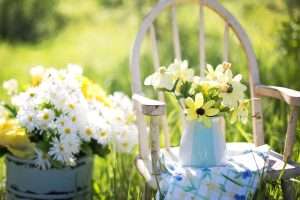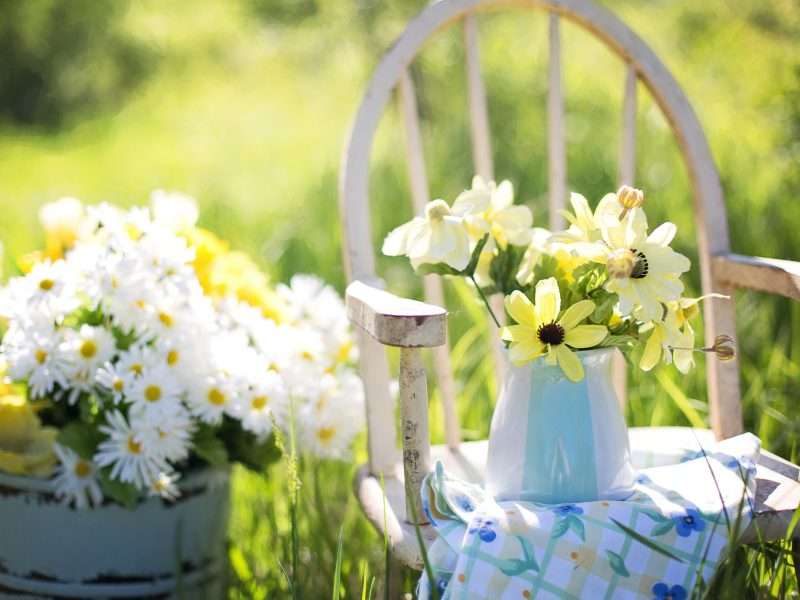If the thought of gardening has you sighing with exhaustion, think again! Growing beautiful blooms that last for more than one season can be achieved by just about anyone – even those with busy schedules. With a few simple tips and tricks, you can enjoy your garden’s vibrant colours all year round without having to spend a significant amount of time doing the upkeep.
In today’s article, we’ll discuss how to create an easy-to-care-for flower bed and strategies for keeping it healthy so you can appreciate its beauty every day.
Plants that flower in spring

Spring always brings a burst of energy to any garden, as the days grow longer and the temperatures start to climb. Bloom time inevitably arrives, and plants pop up one after another, inviting us with their riotous colours and heady scents. I for one can never get enough of the masses of daisies, rhododendrons and pansies that begin to fill my garden in early spring – there is something just so special about nodding my head in solemn appreciation of a freshly-bloomed plant.
The easiest spring-flowering plants to grow and maintain are typically annual bedding plants, such as petunias, pansies and snapdragons. All these require are a few hours of sun per day, moist but well-drained soil and regular watering. More delicate plant species include clematis and heather, which require more attention but reward with vibrant blooms for months.
Plants that flower in summer

There are many different types of beautiful plants that flower in the summer months, ranging from daisies and marigolds to petunias and coneflowers. Whether you prefer fragrant flowers with bright blooms or subtle pastel shades that fade into the landscape, there’s a stunning summer flower just waiting for your garden. Planting such flowers can transform your outdoor space into something truly magical, providing a captivating area for family or friends to enjoy no matter the season.
Plants that flower in autumn
Fall is the perfect time to bring a touch of colour, life, and beauty to any garden. Bloom-filled plants that flower in autumn add pops of happiness wherever they are planted. Perfect for those autumn days when temperatures start to drop and gardens need a little bit of cheerfulness, these plants give a gardener’s green thumb something to smile about. Popular autumn-flowering species include chrysanthemums and dahlias, both of which bloom in a wide range of colours. Lesser-known species of plants that flower in the autumn include aster, sedum and evergreen clematis.
Plants that flower in winter
Winter can feel especially dull, particularly during overcast days with no sunlight. However, if you’re a passionate gardener, there are plenty of flowers that will bloom regardless of what season it is. The blooms of winter plants bring stunning colours and interesting shapes to brighten up your garden! One suggestion might be the crocus, which emerges in late winter with delicate flowers in shades of purple, yellow and even white. If you’re blessed with mild winters, calendula brings bright orange blossoms as well as hollyhocks which offer lightly scented tall blooms in an array of delightful pastels.
Choose perennials over annuals
When it comes to growing a garden, perennials are the way to go for maximum beauty and impact year after year. With annuals, you will spend each spring trying to start your garden from scratch. On the other hand, perennials come up again and again, putting on a stunning bloom each season and providing beauty and variety to your garden. Plus, once established those gorgeous plants become low maintenance — no replanting necessary — in contrast with annuals which require regular replacement to maintain their looks in the garden. So come rain or shine, think perennial!
How to design a low maintenance garden

Designing a low-maintenance garden can be a very rewarding experience. Start by creating an atmosphere of beauty, health and sustainability. Focus on planting flowers and plants that require little upkeep but will still provide you with amazing blooms throughout each season. Make sure to invest in slow-growing shrubs, trees and perennials that can live for many years before they need to be replaced. For your herbaceous border, look for self-seeding varieties such as poppies, cornflowers and California poppy; these are relatively easy to maintain with only an occasional weeding or thinning. Finally, create paths through the garden using bark chips or gravel which will need minimal attention and look great for years to come!
Which plants are the easiest to grow?
Taking up gardening can feel overwhelming and even frustrating, but it doesn’t have to be! Knowing which plants are the easiest to grow will help you create a lush garden with colourful blooms in no time. Many types of plants are simple to grow and sustain with relative ease; some of the most popular options include marigolds, daisies, begonias, hibiscus, daffodils and sunflowers. Each one offers easy-to-maintain care and can bring colour and beauty to any home garden.
While tender annuals may take more time and effort than other species, they offer delightful blooms that add charm to your plot of land. Annuals that are best suited to a British climate include foxgloves, salvia and petunias. These types of plants will reward you with a gorgeous display of colour all summer long.
What to consider before choosing your plants
When you’re deciding on which plants to adorn your garden with, there are plenty of factors to consider. Bloom season is a key one; you’ll want to make sure that you have something in flower throughout most of the year so that your garden stays vibrant and captivating. Make sure to also research how much sunlight and water each plant needs – some might require more sun or more rain than other species, so adjust accordingly before planting them in the ground. Whatever your planted arrangement ends up looking like, you’re bound to find satisfaction in creating a beautiful and luscious garden through careful consideration of bloom season, light needs, and general care for each type of plant.
Conclusion
By following the tips in this blog post, you can easily enjoy garden blooms all year long – even if you don’t have a green thumb! By planning ahead and taking care of your plants, you’ll be able to enjoy beautiful blooms throughout the entire year. So what are you waiting for? Go get started on enjoying your very own garden of blooms.






Comments